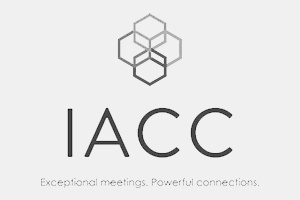Keeping the momentum going to ensure learning is implemented after employees experience training is just as important as the training itself. Here’s how to ensure your organisation’s learning is as sticky as possible.
Sticky learning is all about ensuring the content of a training session stays in employees’ minds afterwards, so new skills can be implemented in the workplace. Within the context of the day-to-day pressures of a workplace, employees sometimes feel they’ve attended a fantastic training course, but don’t have the time or space to implement new skills when they’re back in the office.
Introducing methods of ensuring learning sticks can result in a win-win situation for both employers and employees. Employers want to spend training budgets on courses that will actually benefit them, while employees want to feel a tangible sense of upskilling and career progression. Taking steps to ensure organisational learning is sticky doesn’t have to involve more time and resource either. With planning and a thought-through approach to training, sticky learning is possible in every workplace.
Here are some key areas to assess how sticky your organisation’s learning is, with some tips on how to make learning even stickier.
Identifying the Right Training
Sometimes it doesn’t feel like training sticks in an organisation because the learning opportunity wasn’t a good fit for the individual, or the employee doesn’t have an immediate opportunity to implement it when they return to the office. Identify training needs by looking at a staff member’s job description, their learning aspirations and your organisation’s short-term plans. Selecting a training opportunity that fits with these three aspects is much more likely to be implemented in practice.
“Design learning material that talks directly to the question that’s most consuming the people in your organisation today.”
- Pam Bateson, CEO, Thrive Partners, Sundial Group L&D Thought Leaders Conference 2018

Post-Training Debriefs
Establish a process for connecting with members of staff straight after they have attended a training course. This could be a dedicated session with a manager or an online template they have to complete, outlining key learnings from the training. It’s most important to establish what happens next too. Agree on how the staff member will implement the learning in their day-to-day work, ensure they have a dedicated project to work on that will make use of the learning or identify next steps for building on this new knowledge.

Take Notice of Training Implementation
Employees value the opportunity to learn and develop themselves, but they also need recognition in the workplace that their new skills are being noticed. A simple ‘thank you’ from managers when they notice an employee is implementing new skills can go a long way. It’s also a good idea to review the implementation of knowledge acquired from training – and not just the delivery of training itself – in formal appraisal processes.
Culture of Learning
Training, learning and development isn’t just a bi-annual perk of the job when employees are sent on a training course. Learning should be continuous and ever-present in the workplace, and creating an environment where there is a culture of learning is key to this. As well as providing training opportunities off-site, develop a programme of knowledge-sharing and peer-learning throughout the year too. It could be as simple as a weekly ’10 minute download’ where different members of staff talk about something they’re working on at the moment.

Address Multiple Learning Styles
Offering a diversity of training and learning methods in a workplace is a guaranteed way to make learning much stickier. Some employees thrive at hands-on training courses; others enjoy focused moments of online learning instead. Ensure staff members have a choice of training methods. Offering online resources and peer-to-peer learning can also make learning feel more manageable in bite-sized chunks.

The ultimate barometer for assessing how sticky your organisation’s learning is your people. Do they talk about learning they’ve picked up, are they implementing it, and do they keep coming back for more training? These are all great signs that training has stuck. If your people feel this way, the knock-on effect to your organisation will quickly follow.
“Are people coming back to it; are they re-using it? If it’s sticky, people are enjoying it, you see things are improving in an organisation and you’re obviously doing something brilliantly.”
- Pam Bateson, CEO, Thrive Partners, Sundial Group L&D Thought Leaders Conference 2018





